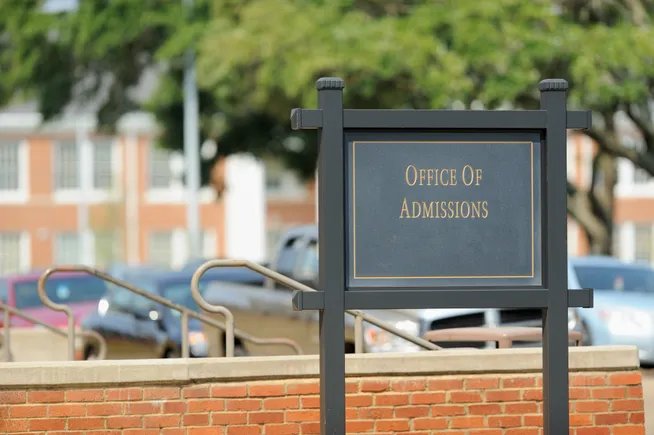Emily Rawers is the director of undergraduate recruitment and admissions at the University of Cincinnati’s College of Engineering & Applied Science.
More than 80% of four-year colleges and universities are test-optional in the U.S., many of which made the transition due to the COVID-19 pandemic. Although some institutions were already implementing test-optional policies pre-COVID, it has become the norm as opposed to the exception. Some institutions, such as the State University of New York, have shifted to test-optional permanently.
These policies are an advantageous, built-in way to support diversity, equity and inclusion following the recent U.S. Supreme Court decision against race-conscious admissions. And with so many institutions implementing test-optional policies, colleges should leverage one another’s resources and data to understand the significant contributors to student preparation, success and retention, such as grades and curricular rigor.
Some high-profile institutions have recently shed their test-optional policies, contending that standardized tests provide context to student performance and college readiness and are beneficial in recruiting diverse students. But there are many reasons for institutions to be wary of reinstating ACT or SAT requirements.

Emily Rawers
Permission granted by Emily Rawers
For one, standardized tests for college admissions grew out of exclusionary, discriminatory intentions and are a biased way of testing aptitude for college readiness and success. While the College Board, which administers the SAT, says it takes steps to ensure fairness, score gaps among racial groups still exist.
Changing test policies mean students may be changing how they prepare for the tests and taking the process less seriously. Different test-optional policies can also be confusing to navigate. Moreover, fewer students are taking standardized tests compared to before the pandemic, and those that do have scored lower.
A 2014 study also found high school students who don’t submit scores graduate college at very similar rates and with similar GPAs as those who do. And research from 2020 found that high school GPA is a better predictor of college completion than ACT scores.
We have the chance to continue to evolve equitable admissions practices without standardized test scores. But where can we begin?
- Dig into the institutional data. Have you truly looked at the data in a way that shows what makes students successful? Is previously used data biased? We need to be conscious of the demographic makeup of the class and changing goals of admissions guidelines when using historical data related to student success.
- Find out who has what data and identify where there are gaps. Are new systems or products needed to better obtain or utilize the information?
- Seek out and utilize nonacademic factors in admissions decisions that may indicate that a student is ready for their institution or curriculum, such as grit and self-efficacy. Find ways to better utilize qualitative data from applications to inform admissions practices.
- When looking at data, keep in mind that there were many disruptions for students — personally and academically — in the thick of the COVID-19 pandemic that may have affected grades, learning and preparation for college.
- Better communicate with students about which core and prerequisite courses are needed for the institution and specific programs in which they are interested.
- Take a deep dive into curricula with lower than average retention rates — is it unnecessarily being used to “weed out” students? Is it biased or meant to keep certain groups out?
- Look for improved evidence-based pedagogies that focus on teaching a diverse range of students, instead of expecting students to fit the same model of teaching.
- Consider who needs to be included in discussions and planning. Taking the time to consider the folks who need to be involved can be just as important as the work itself.
We may not yet have the data we need to fully assess success from students who entered college under test-optional policies. But we shouldn’t be looking for reasons to reinstate standardized tests or continuing to call this time period a pilot — we should be looking for what comes next.
What we are seeing in admissions can inform how we teach and support students once they are enrolled. In other instances, what we see within retention and student success informs what should be done on the admissions side.
It’s worth formulating a highly detailed plan for the data collection and analysis of the factors linked to student persistence and completion within their programs programs — and at the university-wide level — in order to predict retention rather than allowing governing boards to rotely continue extending test-optional policies. This knowledge will also inform the academic and nonacademic supports that students need to be successful.
Data can then be translated into admissions guidelines for first-year, transfer and other programs. It can also help an institution assess what needs to change to properly support students. Colleges would gain something for their bottom lines too — it costs less money to retain a student than it does to recruit a new one. This is ever-important as we begin to experience significant demographic changes and enrollment decreases in the U.S.
The decision to continue test-optional practices should be guided by the desire to find more reliable data to inform our admissions practices and the way we support diverse student populations.
#Admissions #shouldnt #tests #anymore




![How Do You Know You Need A Case Management Upgrade? [Sponsored]](https://namesit.xyz/wp-content/uploads/2024/10/board-978179_1280-2-150x150.jpg)





